IN PHOTOS: Lunar New Year in Binondo
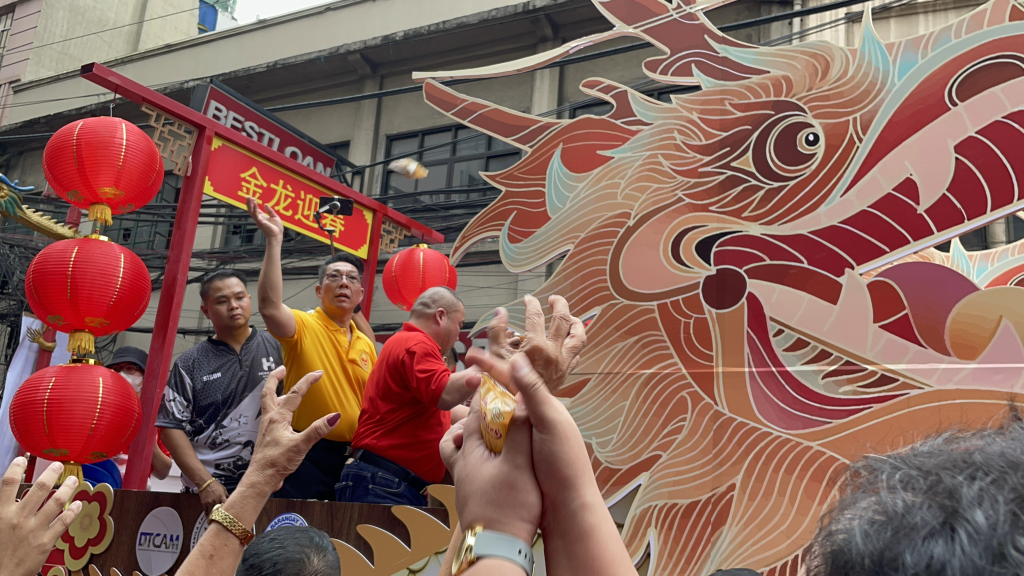
Members of the local Chinese-Filipino community throw candies, ang pao, sticky rice cakes and Lunar New Year merchandise during the float parade that started from the Central Post Office to Lucky Chinatown Mall. Photo by API Desk.
By API Desk | Date 02-10-2024
MANILA — In the oldest Chinatown in the world, the Lunar New Year is celebrated in a mix of Filipino and Chinese cultures.
Binondo, a district in the Philippine capital Manila, was established by the Spanish in 1594 as a permanent settlement for the Chinese population who had converted to Catholicism. The district celebrated its 430th anniversary last February 1.
The Manila City government is expecting over 1 million visitors to join in the festivities in Binondo starting from February 8 to 11. The celebration officially kicked off with a fireworks display at midnight on February 9.
On February 10, Filipinos, Chinese-Filipinos, and foreigners flocked to narrow alleys and main roads closed to vehicles to take part in the revelry.
“Going to Binondo on Chinese New Year was honestly a bit overwhelming for a first-timer,” Xave Gregorio, a Las Piñas city resident, tells Asia-Pacific Insights.
Gregorio also shared that he and his friends, who were all first-timers as well, waited for over an hour to get a seat at one of the well-known restaurants in Yuchengco street, before they decided to walk around and look for someplace else to eat.
“It was hard to get around and the lines to restaurants were long. [But we s]till managed to have a fun time thanks to the queer dancers and fire breathers,” Gregorio said.
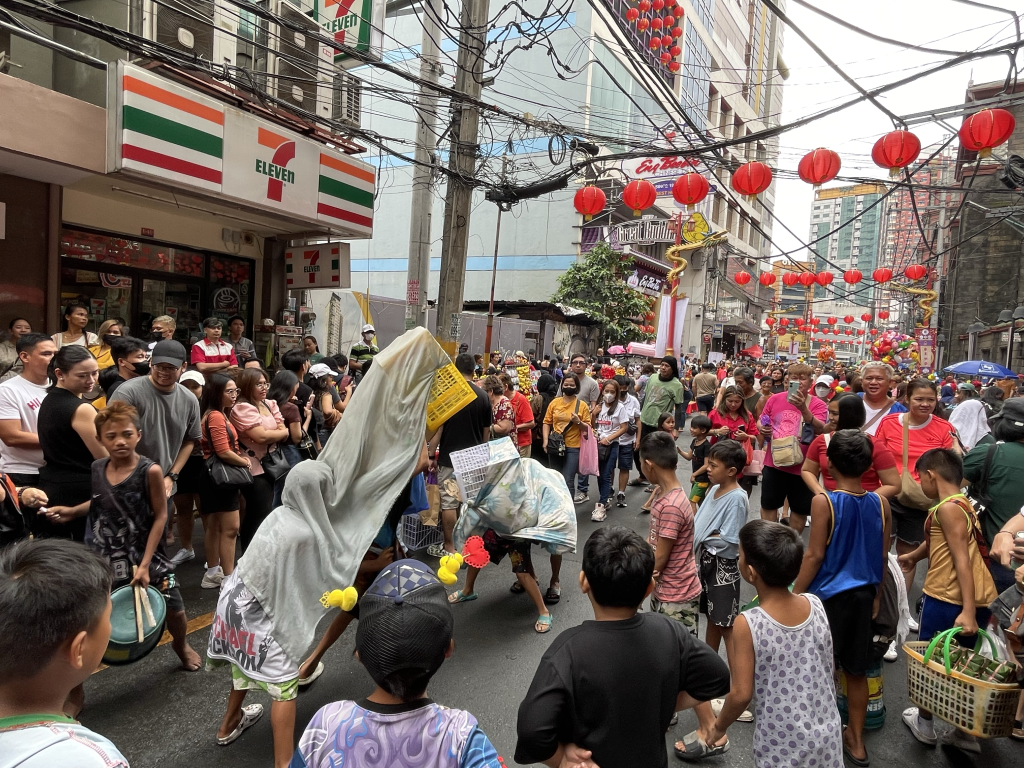
Local children, using bedsheets and plastic crates as makeshift costumes, perform a Lion dance along Ongpin Street in Binondo.
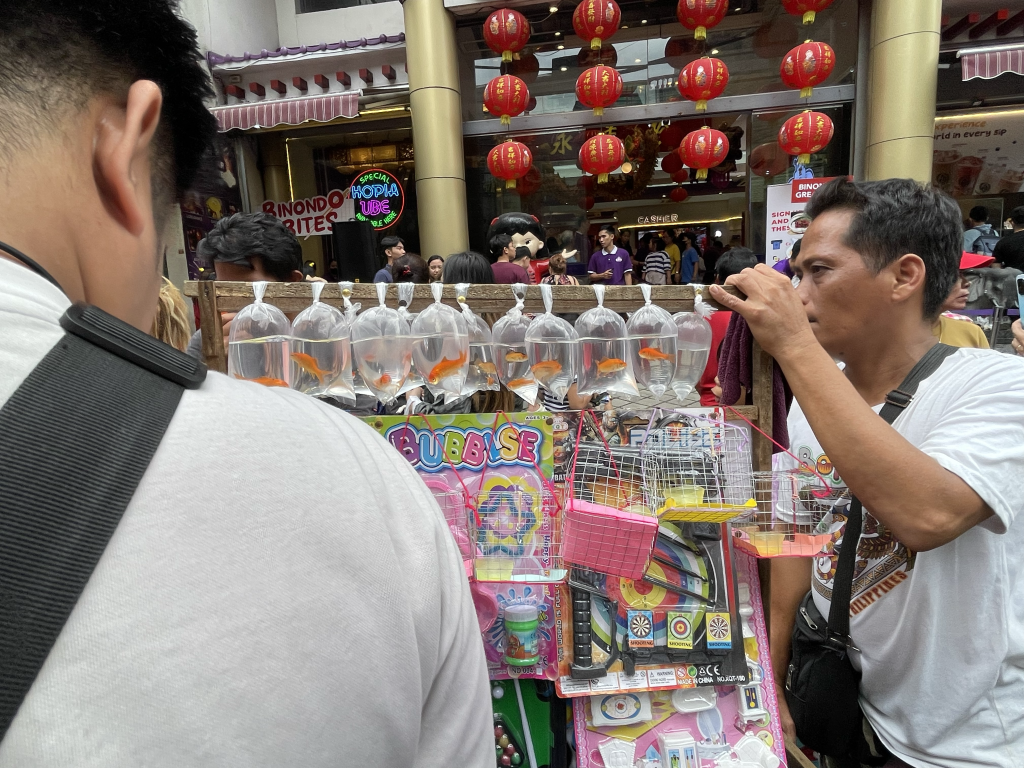
A street vendor sells toys and live fish outside Eng Bee Tin’s flagship store in Ongpin Street.

Red bows are placed on produce, like radish and ginger, which were sold by streetside vendors on Carvajal street.
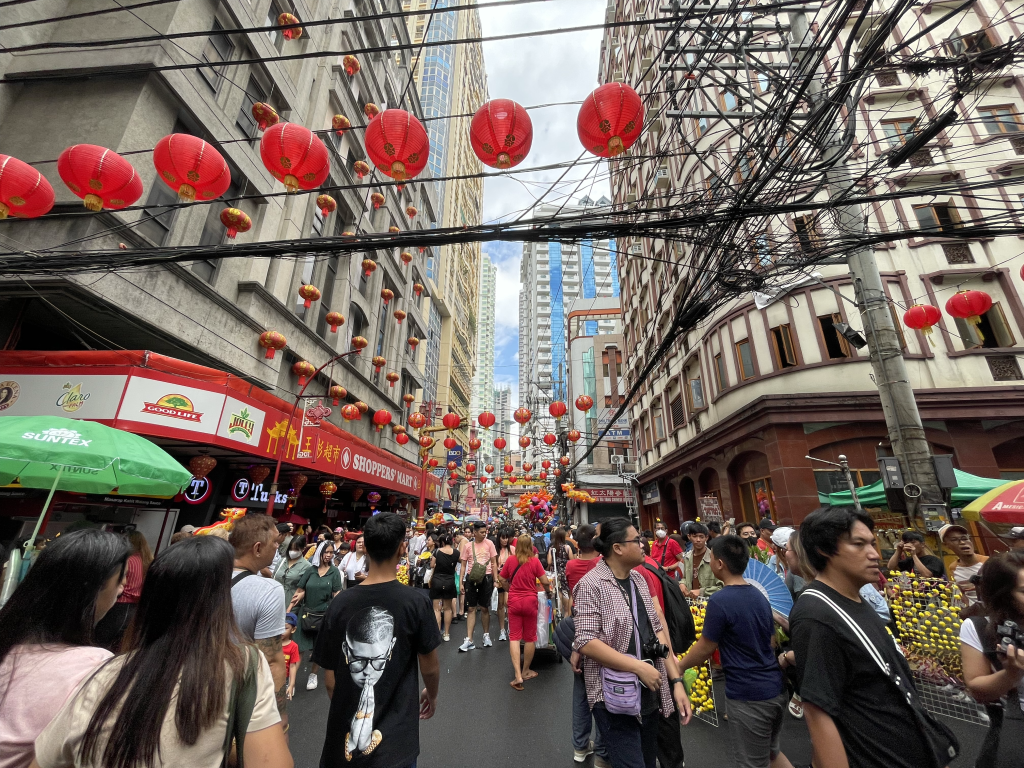 Most streets in Binondo were closed off to allow more foot traffic during the Lunar New Year celebration, and to make way for the float parade which started from the Central Post Office and ended at Lucky Chinatown Mall. Ongpin street, lined with famous restaurants and traditional Chinese shops, was filled with revelers lining up to grab a meal or on their way to Binondo Church.
Most streets in Binondo were closed off to allow more foot traffic during the Lunar New Year celebration, and to make way for the float parade which started from the Central Post Office and ended at Lucky Chinatown Mall. Ongpin street, lined with famous restaurants and traditional Chinese shops, was filled with revelers lining up to grab a meal or on their way to Binondo Church.
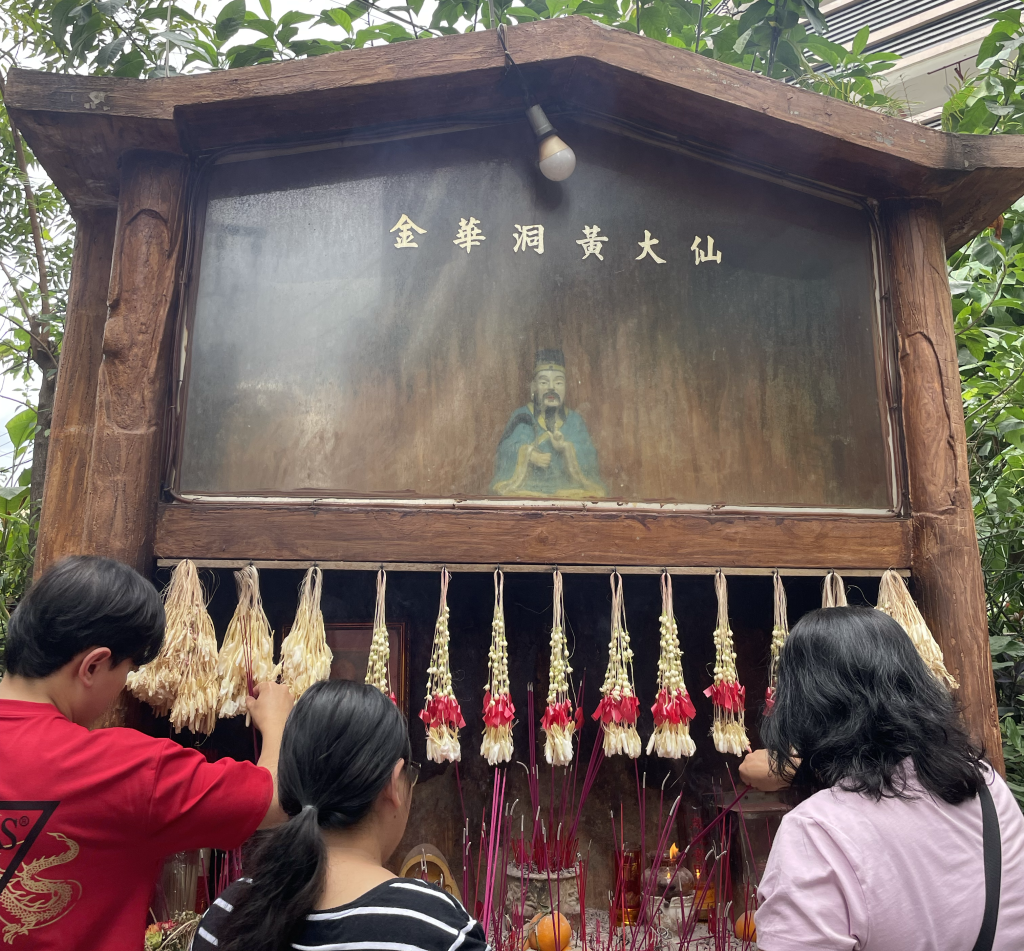
Strings of sampaguita and incense are left on a shrine which can be found at the end of Yuchengco Street.
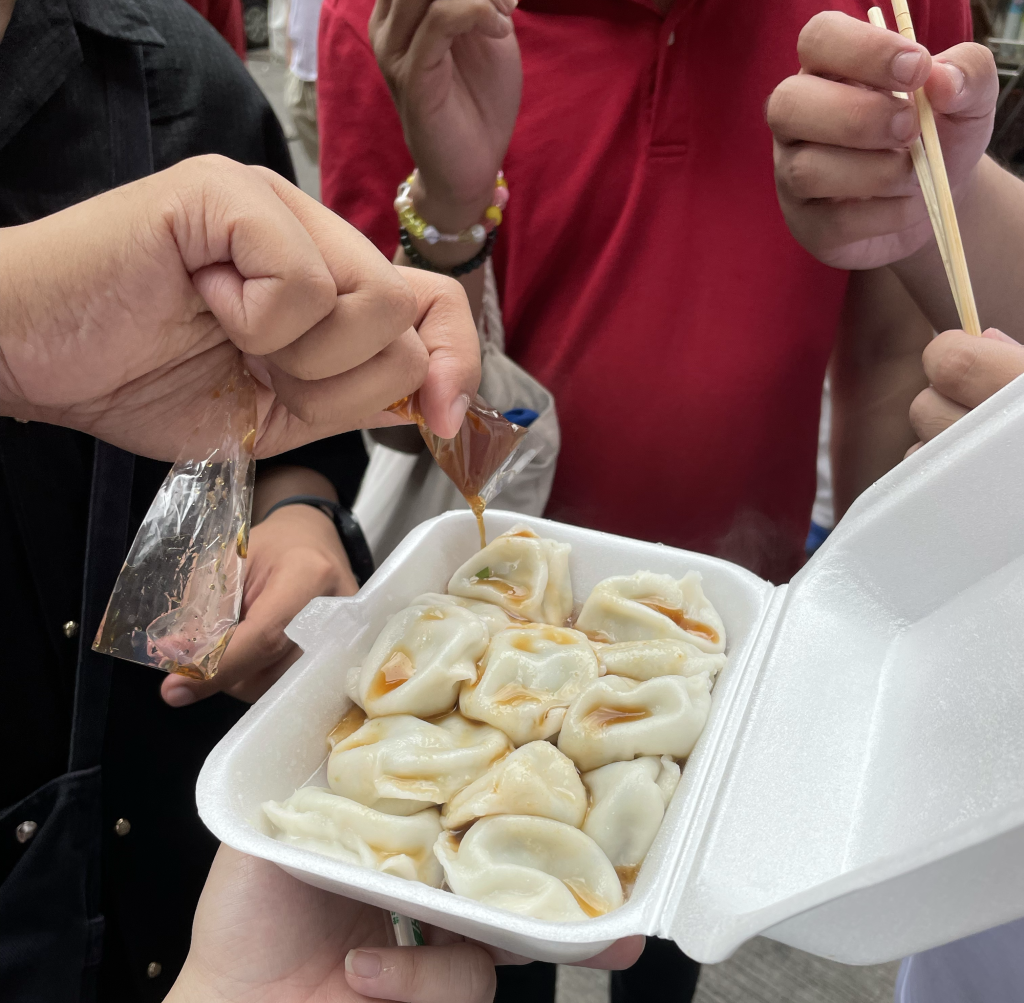
A group of friends share an order of kuchay (pork and chives) dumplings outside Dong Bei dumplings, a well-known takeout spot in Yuchengco Street. An order, which has 14 pieces of dumplings, cost ₱200 or around USD4.
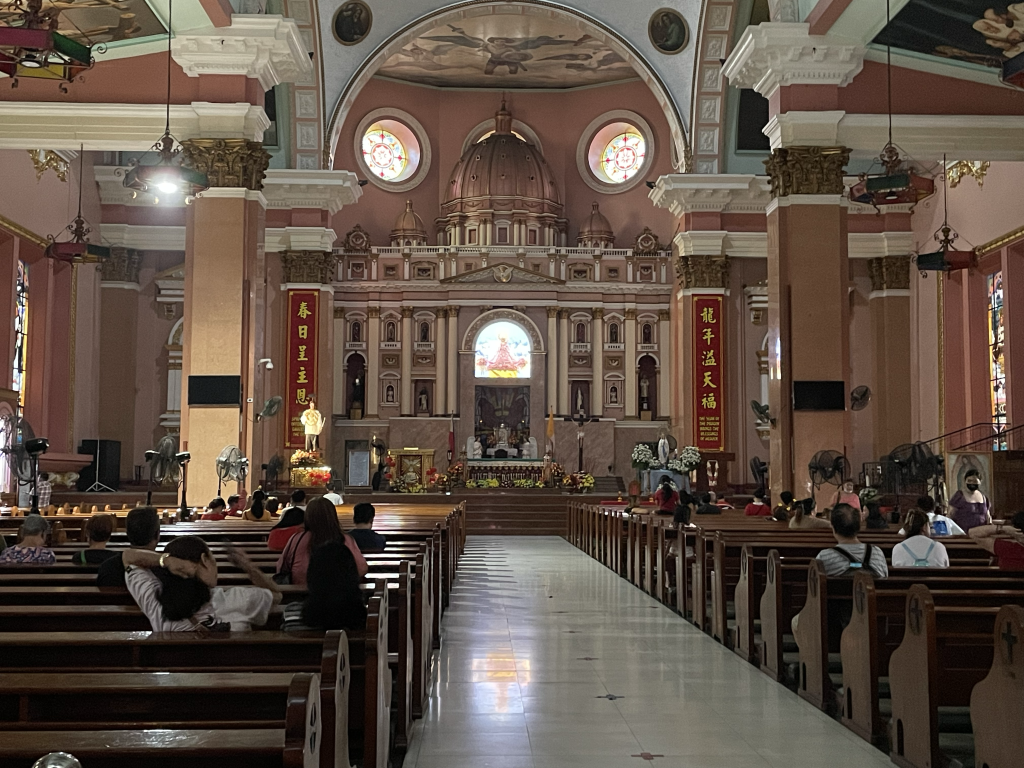
Churchgoers await for the next schedule in Binondo church. Banners with Chinese text are hung on each side of the altar. A priest at one mass greeted churchgoers ‘gong xi fa cai‘ before the final blessing.
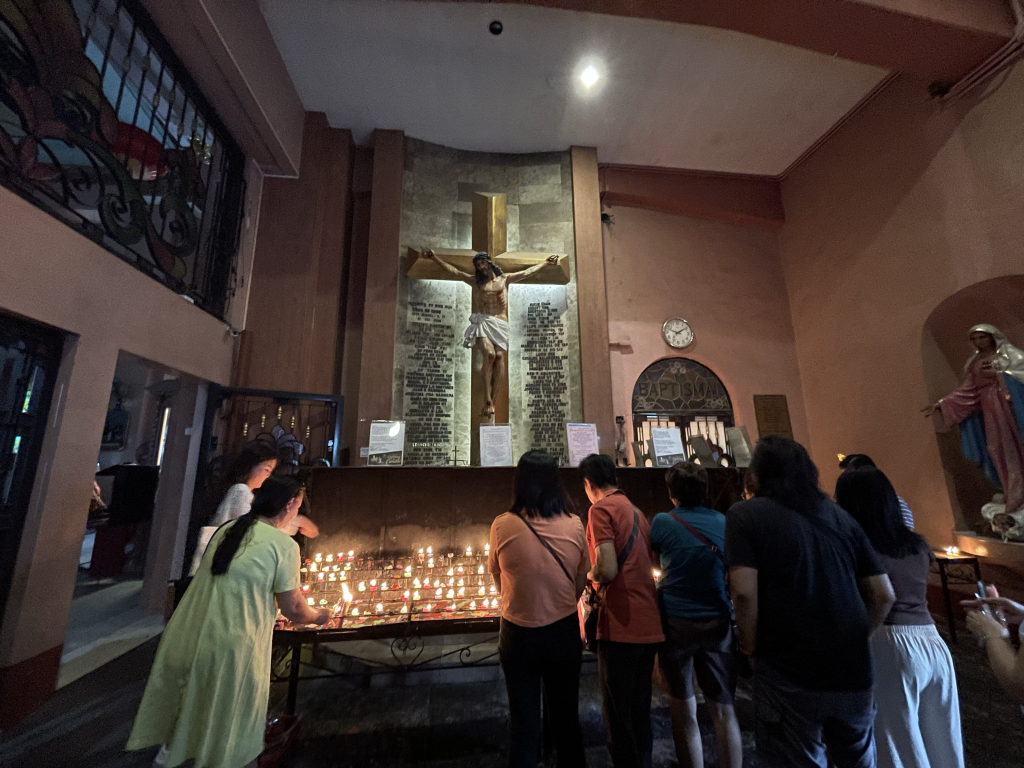
Visitors leave votive candles and offer prayers inside Binondo church.

A performer from the group El Cobra dances and blows fire outside Binondo Church. Different groups, composed of dancers and fire breathers, drummers, and supporting staff, go around Chinatown to perform and collect money from the audience. 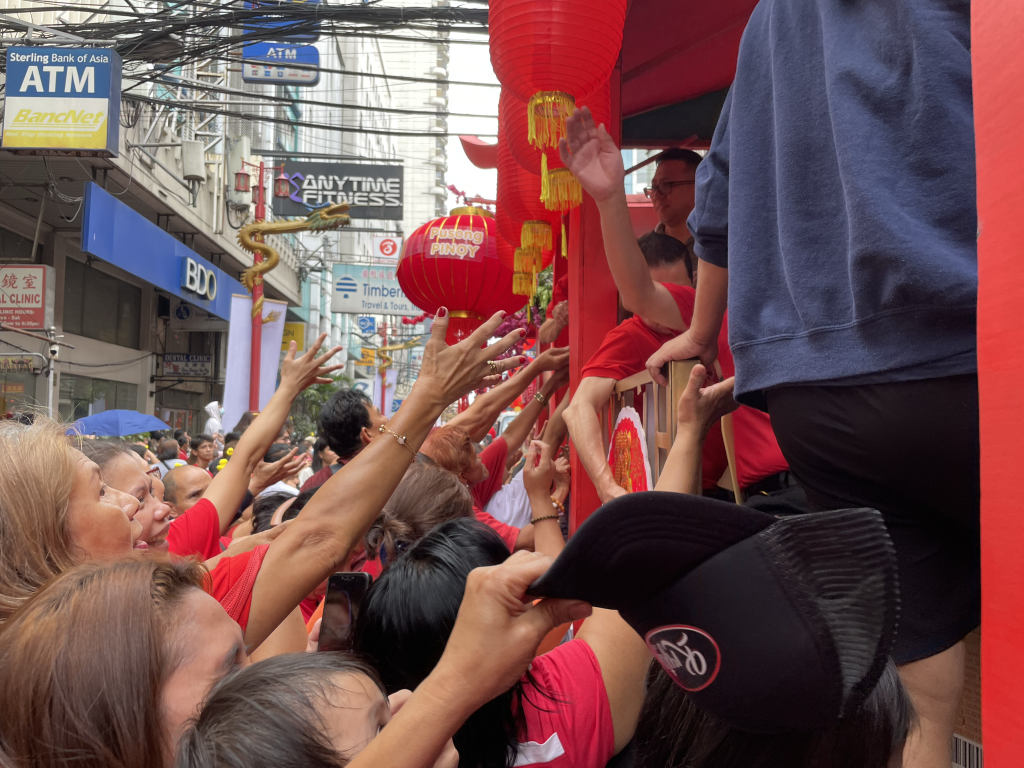
Members of the local Chinese-Filipino community throw candies, ang pao, sticky rice cakes and Lunar New Year merchandise during the float parade. Parade onlookers gather near the floats with outstretched hands for better chances of catching giveaways.
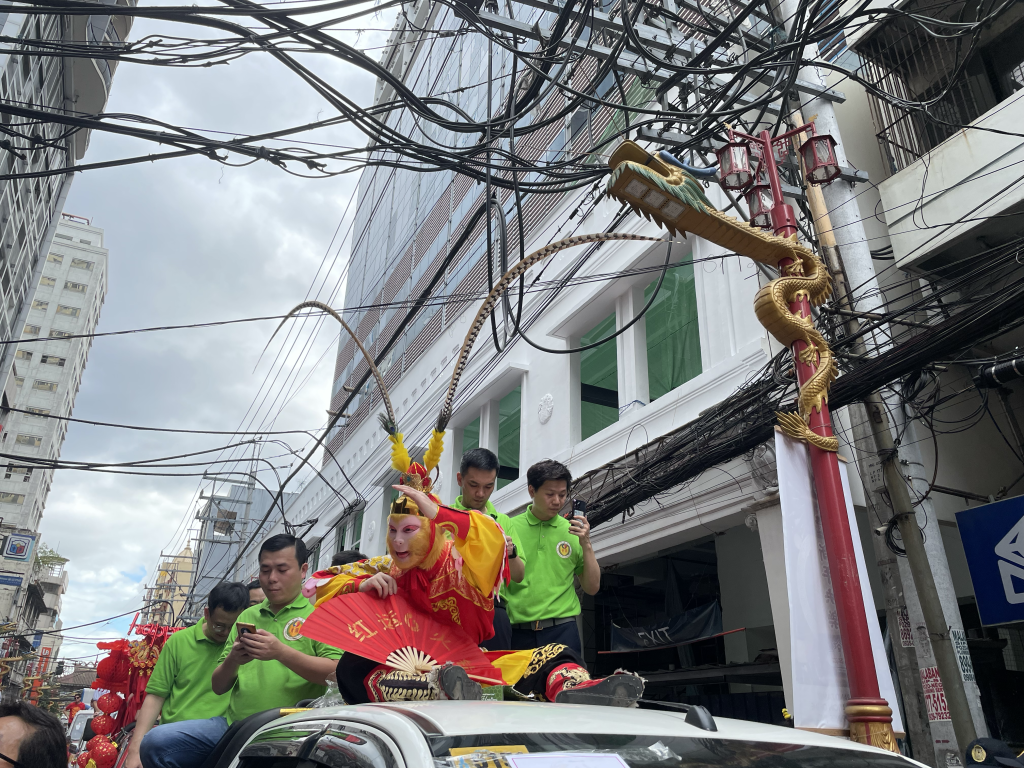
A man dressed as Sun Wukong, a famous Chinese fictional character, poses for the crowd during the float parade.
Tags: Events
